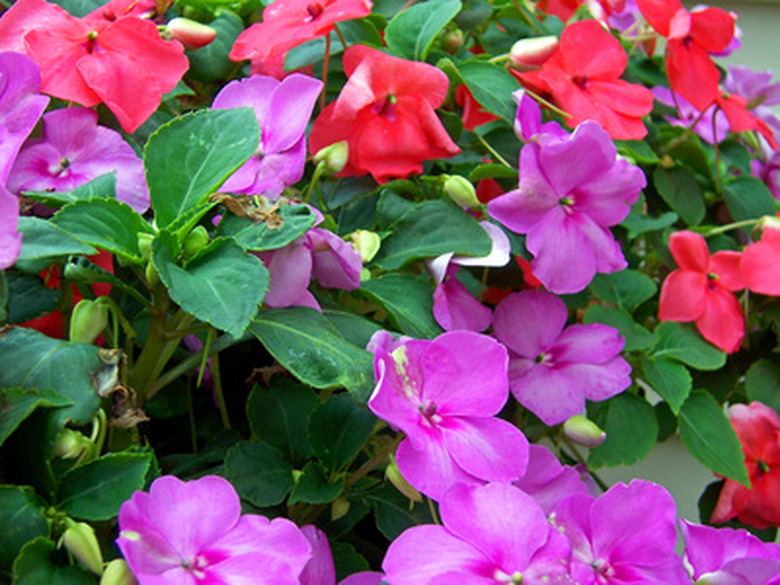Fertilizer For Impatiens
Impatiens are one of the few flowering plants that thrive in shady locations where splashes of color are often desired most. Another reason for their popularity is the long duration of their blooming period. They also do well in containers and hanging baskets, giving those with no access to garden space the opportunity to grow flowers. Impatiens fertilizer needs are determined by the soil and container they are growing in.
Type
A water-soluble general fertilizer is recommended for impatiens. Water-soluble fertilizers can be mixed with water for easy application. They are quickly distributed to the plants or leached out of the soil. They are easier to mix in precise quantities, allowing the greatest nutrient control for impatiens, whether planted directly in the garden or in a container.
- Impatiens are one of the few flowering plants that thrive in shady locations where splashes of color are often desired most.
- They are easier to mix in precise quantities, allowing the greatest nutrient control for impatiens, whether planted directly in the garden or in a container.
Function
The purpose of fertilizer is to replace soil nutrients lacking in the soil. General-purpose fertilizers, which are satisfactory for impatiens, provide nitrogen, phosphorus and potassium or N-P-K. The concentration of each of these three nutrients is displayed on labels as numeric values, for example 10-10-10. The nitrogen causes plants to develop lush foliage. Phosphorus improves root development and flower production, while potassium is necessary for overall plant health. All three are important to the health of impatiens.
Time Frame
Fertilizer should be added to soil before planting, whether you are planting seeds or transplanting seedlings into the garden or another container. Mix a general fertilizer, with a rating of 10-10-10 to 13-13-13, into the garden soil or potting soil. For impatiens in the garden, make additional applications every six to eight weeks. For plants growing in containers, apply fertilizer every two weeks.
- The purpose of fertilizer is to replace soil nutrients lacking in the soil.
- For plants growing in containers, apply fertilizer every two weeks.
Considerations
If impatiens is planted in containers with other types of plants or in close proximity to others in the garden, there may be issues arising from the compatibility of fertilizer needs of each plant. If neighboring plants have a different pH requirement or nutritional needs, the fertilizer used for the impatiens may be harmful to them and vice versa. Check the plants' compatibility before placing them in the same container or garden bed.
Other Concerns
A poorly growing impatiens may not be a sign it needs fertilizer. Make sure the impatiens is receiving at least two to four hours of dappled sunlight each day and that the soil is well drained. Check for insects or other signs of a problem before applying fertilizer. If no visible signs indicate a problem, a soil test may be able to determine the cause and recommend a course of action, including the right type of fertilizer to get the impatiens growing again.
- If impatiens is planted in containers with other types of plants or in close proximity to others in the garden, there may be issues arising from the compatibility of fertilizer needs of each plant.
- If no visible signs indicate a problem, a soil test may be able to determine the cause and recommend a course of action, including the right type of fertilizer to get the impatiens growing again.
